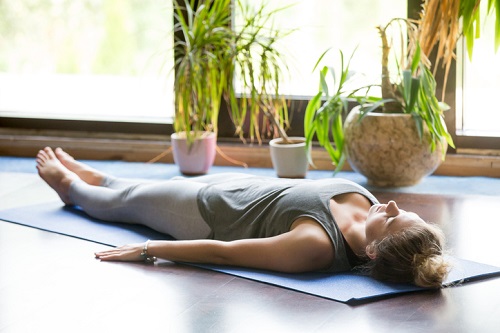In my previous article Somatic Anxiety Explained, I discussed how physical symptoms of anxiety can often be mistaken for physical health conditions, and the underlying anxiety can be overlooked.
For those who experience physical symptoms when anxiety levels increase, here are a few tips to help.
Note: Many of the physical symptoms attributed to anxiety in this article can also be caused by physical health conditions, such as heart problems. If you’re experiencing any of these symptoms and are concerned about your health, please discuss it with your GP.
Become Aware of your Anxiety Levels
The first step is learning to become aware of the early signs of increasing anxiety levels. Awareness of possible triggers and the early signs of anxiety allows you to use any tools or strategies you have, before the feeling becomes overwhelming.
So I encourage you to write it down.
- Writing down what you were doing and what you feel when your anxiety levels are high, can help you identify potential triggers and symptoms to be aware of next time.
- It doesn’t have to be a full length journal, even scribbled notes on a scrap piece of paper can help you remember it later.
Tips for Managing the Physical Symptoms of Anxiety
Tips for increased heart rate, shortness of breath, tingling or numbness: Deep breathing is an amazing tool for treating a number of symptoms associated with anxiety. Deep breathing helps to:
- Normalise oxygen levels in the blood, lowering blood pressure;
- Lower the heart rate;
- Reduce sensations of tingling and numbness;
- Lower cortisol levels (stress hormone) in the brain.
There are a number of deep breathing techniques that will help in this situation. I have provided a step by step guide to a basic, empirically supported, deep breathing technique in my previous article on depression and burnout for those who are interested. But just taking a moment to take 10 deep breaths will help too.
Key things to remember:
- The point is to slow breathing rate down;
- Breathe deeply (stomach should expand as the lungs push down on the diaphragm);
- Regular practice (recommended daily) makes it easier to implement this technique in a highly emotional situation.
Tips for muscle tension and chest/stomach discomfort: A tool that can help with symptoms related to muscle tension like tense shoulders, knotted sensation in your stomach, or tight chest is Progressive Muscle Relaxation (PMR).
PMR involves systematically isolating muscle groups in the body, actively tensing them for a short period of time, then relaxing them. There are many videos with guided PMR on YouTube and other sites that can be helpful tools for learning this technique, but I will outline the basic step by step process below.
- Step 1: Find a comfortable position either sitting or lying down – try to find somewhere with minimal distractions and soft lighting if possible.
- Step 2: Begin by isolating muscle groups, engage the muscles in such a way that you can feel the tension. It shouldn’t be painful. Hold the tension for at least 5 seconds.
- Step 3: Slowly release the muscle and feel it relax. Keep it relaxed for at least 10 seconds. Notice any areas that you find difficult to relax properly and spend a bit more time on those areas.
- Step 4: Repeat for all muscle groups (or a selection for shorter practice), then allow yourself to take a few moments to become alert again before trying to get up.
- Step 5: Practise. Practising this technique regularly, helps improve your ability to isolate and relax specific muscles, as well as improving your awareness of your muscles and where tension builds up in your body.
Example of muscle groups and order if working from the feet to the head:
- Left foot (curl or spread toes);
- Left lower leg (flex foot to stretch calf);
- Left upper leg (tighten thigh);
- Right foot;
- Right Lower Leg;
- Right upper leg;
- Hip and buttocks (squeeze your bum);
- Stomach (tighten your abdominals, squeeze your spine towards your belly);
- Chest (take a deep breath);
- Back (squeeze shoulder blades together);
- Left Hand and forearm (clench or spread fingers as far as possible);
- Left upper arm (show me your guns);
- Right hand and forearm;
- Right upper arm;
- Shoulders (squeeze shoulders up towards ears);
- Neck (press chin down towards chest);
- Jaw (open mouth as wide as possible);
- Face and forehead (Squeeze eyes shut, frown and draw eyebrows together).
Caution: if you have injuries that are aggravated by tensing or moving in certain ways, consider consulting your doctor and avoid actively tensing these muscles. An alternative to actively tensing the muscles in that area is to simply focus on feeling whatever tension they are naturally holding, then seeing if you can get them to relax more than they already are.
 Author: Nikki Crossman, B Psych Science (Hons).
Author: Nikki Crossman, B Psych Science (Hons).
Nikki Crossman is a Master of Psychology (sport and exercise) candidate at the University of Queensland, passionate about the benefits of sport and exercise for mental health. She takes a holistic approach to wellbeing that recognises the strong connection between our body and our mind, and draws on evidence-based therapies such as CBT and Interpersonal therapy.
To make an appointment try Online Booking. Alternatively, you can call M1 Psychology Brisbane on (07) 3067 9129
References:
- American Psychiatric Association. (2013). Diagnostic and statistical manual of mental disorders (5th ed.). Arlington, VA: American Psychiatric Publishing.
- Jerath, R., Crawford, M. W., Barnes, V. A., & Harden, K. (2015). Self-regulation of breathing as a primary treatment for anxiety. Applied psychophysiology and biofeedback, 40(2), 107-115.
- Bracke, P. E. (2010). Progressive muscle relaxation. Corsini Encyclopedia of Psychology.
